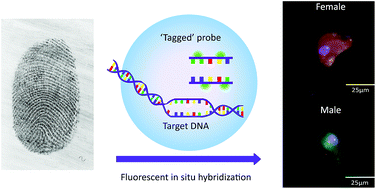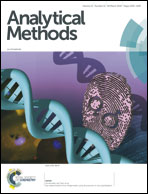Sex determination from fingermarks using fluorescent in situ hybridization
Abstract
When fingermarks are not suited for automated fingerprint identification, caused by for instance, poor development or when no match can be found in the fingerprint database, the chemical composition can be used to extract additional information about the donor of the fingermark. DNA potentially allows identification, however, the recoverable amount of DNA present in fingermarks is often too low to allow successful DNA-profiling. Therefore, in this research we focus on a method of in situ analysis of the available nucleated cells in fingermarks without prior DNA sampling and extraction and target specific DNA sequences in these cells to reveal potential additional donor profile information. To prove the principle, we determine the sex of the fingermark donor by targeting specific sequences on the X and Y chromosome using fluorescent in situ hybridization. Successful determination of the donor's sex based on the presence of male or female cells in the fingermark depositions is demonstrated. Powder dusting and lifting the fingermarks with gelatine lifters does not influence fluorescent in situ hybridization as male and female nucleated cells can be established reliably in fingermark residues. We show that both biometric information and donor characteristics can be obtained from fingermarks including both the morphological and the chemical properties of the fingermark.



 Please wait while we load your content...
Please wait while we load your content...